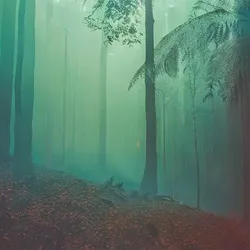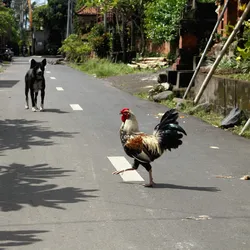
Level 1:
In a big park in North Dakota, something is worrying people who like nature and old stories. The park has horses that are important and loved. But these horses might have to leave, and this makes people talk about what should happen.
People like to watch the horses because they remind them of the past and the wild places. Some say the horses are like a picture of the West. But some want to take them away, and this is causing a big talk about what’s right.
People in charge of the park are making plans. They want to decide if the horses should stay or go. If they go, they will be caught and given to other people. This makes some people sad because they like the horses.
The horses have friends who want to help them. They say the park belongs to everyone, so they should say what happens to the horses. One person thinks the horses should have babies, so they can stay for a long time.
A long time ago, the horses got into the park by accident. People tried to get rid of them, but then they changed their minds. They said the horses can stay and show how things used to be.
Now, people are not sure what to do. Should the horses stay and make the park special, or should they go? It’s hard to choose, but it’s important to think about the horses and the park.
Level 2:
In North Dakota’s big park, there’s a problem concerning the wild horses loved by many. These horses, a symbol of the past and nature, might need to leave, sparking debates about their future.
People who enjoy the park worry. They like seeing the horses roam freely, a sign of the West. Some think they’re special, but others call them livestock. Plans are being made to decide if they should stay or go.
Supporters want a say. They think it’s our park, and the horses matter. Some say the horses should have babies to stay around.
In the past, the horses ended up in the park by mistake. People tried to remove them, but later changed their minds. They kept them for their history.
Now, people are divided. Should the horses remain and make the park unique? It’s a tough choice, but thinking about both the horses and the park is crucial.
Full Story:
In the heart of North Dakota’s Theodore Roosevelt National Park, an issue is brewing that has both nature enthusiasts and history aficionados on edge. The iconic wild horses that have long roamed these Badlands are facing the possibility of removal, sparking a passionate debate about the future of these majestic creatures and their place within the park’s landscape.
For many visitors who wind their way along the park’s scenic roads, the sight of wild horse bands grazing against the backdrop of the rugged terrain has become an emblem of the American West. These horses, seen as a living connection to the past, have captured the imagination of tourists and locals alike. However, recent proposals by the National Park Service have ignited concerns among advocates who vehemently oppose the idea of considering these horses as mere “livestock.”
At the crux of the matter is the Park Service’s endeavor to draft new livestock management plans, accompanied by an environmental assessment. This evaluation aims to delve into the potential consequences of different courses of action, whether it involves leaving things unchanged or removing the horses altogether. The latter scenario would involve capturing the horses and distributing some to tribes, with others potentially being auctioned off or entrusted to different entities. Alternatively, a strategy focused on curtailing reproduction could allow the horses to live out their natural lives within the park’s boundaries.
The horses have found allies in the form of government officials and advocacy groups, yet the future remains uncertain. One advocate, Chasing Horses Wild Horse Advocates President Chris Kman, passionately argues, “At the end of the day, that’s our national park paid for by our tax dollars, and those are our horses. We have a right to say what happens in our park and to the animals that live there.” This sentiment echoes the broader debate over the balance between conservation efforts, historical significance, and the interests of the public.
Park Superintendent Angie Richman has noted that there is no specific law mandating the presence of the wild horses within the park’s confines. Regardless of the decision, the park faces the challenge of adhering to a 1978 environmental assessment, which sets a target population range of 35-60 horses, significantly lower than the current count of around 200. However, Chris Kman, among others, advocates for maintaining a higher number of reproductive horses—between 150 and 200—to ensure genetic diversity and long-term viability.
The history of these wild horses is a tale of twists and turns. Initially, they found themselves fenced into the park by accident after its establishment in 1947. In the park’s early years, efforts were made to eliminate the horses, with methods ranging from shooting them on sight to enlisting local cowboys to round them up. Astonishingly, some horses were even sold to a nearby zoo to serve as food for predators. It wasn’t until around 1970 that a new superintendent stumbled upon historical references to wild horses in the area during Theodore Roosevelt’s time in the 1880s. This discovery prompted the park to shift its perspective, opting to keep the horses as a living testament to the open-range ranching era that once defined the region.
While the park’s stance towards the horses has evolved, lingering reservations remain within the Park Service. Castle McLaughlin, who conducted research on the horses’ history while working for the Park Service, highlights that despite the decision to preserve the horses as a historic demonstration herd, the Service wasn’t wholeheartedly enthusiastic about the idea.
As we grapple with the dilemma of the wild horses in Theodore Roosevelt National Park, important questions arise. How can we strike a balance between conserving the park’s natural beauty and respecting its historical context? How should we weigh the sentiments of locals and visitors against the park’s ecological needs? Is it possible to find a solution that accommodates both the horses’ importance as a cultural symbol and the Park Service’s mandate for responsible land management?
The fate of these wild horses serves as a microcosm of broader conservation challenges across the country. It encapsulates the complexities of preserving history, protecting biodiversity, and managing the delicate equilibrium between human interests and the natural world. As the debate unfolds, it prompts us to consider not only the immediate fate of these horses but also the broader principles that guide our approach to the conservation of our cherished national treasures.
Questions:
Question: Why are the wild horses in Theodore Roosevelt National Park important to people?
Answer: The wild horses in Theodore Roosevelt National Park hold significance for people because they remind them of the past and the untamed wilderness. These horses are like a picture of the West, which people enjoy watching as it brings back memories of history and nature. Visitors find joy in observing these horses freely roaming against the backdrop of the rugged terrain, which is a symbol of the American West. Their presence in the park creates a connection between people and the historical era of open-range ranching. These horses are not just animals; they hold cultural value, making them an essential part of the park’s identity and a source of delight for those who visit.
Question: What are the two options being considered for the wild horses in the park?
Answer: There are two main options being discussed for the fate of the wild horses in Theodore Roosevelt National Park. One option is to capture the horses and distribute some of them to tribes. The remaining horses might be auctioned off or given to different entities. Another approach involves controlling the horses’ reproduction to prevent more births. This way, the horses would be allowed to live out their natural lives within the park. These alternatives are being considered to address the challenge of maintaining the horse population while taking into account both the horses’ historical value and the ecological needs of the park.
Question: What do advocates of the wild horses want to see happen?
Answer: Advocates of the wild horses are striving to ensure the horses’ continued presence and protection within Theodore Roosevelt National Park. They believe that the park is a shared space, owned by the public, and therefore, the fate of the horses should be decided collectively. Supporters assert that people have a right to have a say in what happens to the horses in a park funded by tax dollars. Additionally, they emphasize the importance of maintaining a certain number of reproductive horses to ensure genetic diversity and the long-term survival of the species. Their perspective revolves around preserving the horses’ cultural significance and contributing to the park’s unique identity.
Question: Why did the park decide to keep the wild horses despite initial efforts to remove them?
Answer: In the past, the wild horses in Theodore Roosevelt National Park were not welcomed by park officials. Initially, they were accidentally fenced into the park after its establishment. Authorities attempted to eliminate the horses by shooting them on sight and even selling them to a local zoo for predators’ food. However, around 1970, a new superintendent discovered historical references indicating the presence of wild horses during Theodore Roosevelt’s time. This revelation led to a change in perspective, and the park decided to retain the horses as a “demonstration herd” to interpret the region’s open-range ranching history. Despite initial reservations, the horses gained historical value and became a part of the park’s narrative.
Question: What is the main dilemma facing the park regarding the wild horses?
Answer: The central dilemma facing Theodore Roosevelt National Park revolves around striking a balance between preserving the cultural value of the wild horses and adhering to responsible land management practices. The park officials need to decide whether to keep the horses, which symbolize history and nature, or to remove them to achieve the ecological objectives set in the 1978 environmental assessment. This presents a complex challenge of maintaining the park’s unique identity while addressing population control and ecological concerns. The decision will have far-reaching implications for the park’s character, visitor experience, and the broader conservation discourse, exemplifying the intricate choices often encountered in wildlife and habitat management.
Fill in the Blanks:
iconic, vehemently, predators, rugged, accident, cherished, evolved, livestock, methods, ecological, eliminate, ignited, mandating, biodiversity, dilemma, majestic, conserving, endeavor, aficionados, crux, microcosm, equilibrium, enthusiastic, adhering, proposals, consequences, viability, perspective, draft
Preserving Theodore Roosevelt’s Wild Horses: A Vital Conservation Concern
In the heart of North Dakota’s Theodore Roosevelt National Park, an issue is brewing that has both nature enthusiasts and history ________ on edge.
The ________ wild horses that have long roamed these Badlands are facing the possibility of removal, sparking a passionate debate about the future of these ________ creatures and their place within the park’s landscape.
For many visitors who wind their way along the park’s scenic roads, the sight of wild horse bands grazing against the backdrop of the ________ terrain has become an emblem of the American West.
However, recent ________ by the National Park Service have ________ concerns among advocates who ________ oppose the idea of considering these horses as mere ”________.”
At the ________ of the matter is the Park Service’s ________ to ________ new livestock management plans, accompanied by an environmental assessment.
This evaluation aims to delve into the potential ________ of different courses of action, whether it involves leaving things unchanged or removing the horses altogether.
Park Superintendent Angie Richman has noted that there is no specific law ________ the presence of the wild horses within the park’s confines.
Regardless of the decision, the park faces the challenge of ________ to a 1978 environmental assessment, which sets a target population range of 35-60 horses, significantly lower than the current count of around 200.
However, Chris Kman, among others, advocates for maintaining a higher number of reproductive horses—between 150 and 200—to ensure genetic diversity and long-term ________.
Initially, they found themselves fenced into the park by ________ after its establishment in 1947.
In the park’s early years, efforts were made to ________ the horses, with ________ ranging from shooting them on sight to enlisting local cowboys to round them up.
Astonishingly, some horses were even sold to a nearby zoo to serve as food for ________.
This discovery prompted the park to shift its ________, opting to keep the horses as a living testament to the open-range ranching era that once defined the region.
While the park’s stance towards the horses has ________, lingering reservations remain within the Park Service.
Castle McLaughlin, who conducted research on the horses’ history while working for the Park Service, highlights that despite the decision to preserve the horses as a historic demonstration herd, the Service wasn’t wholeheartedly ________ about the idea.
As we grapple with the ________ of the wild horses in Theodore Roosevelt National Park, important questions arise.
How can we strike a balance between ________ the park’s natural beauty and respecting its historical context?
How should we weigh the sentiments of locals and visitors against the park’s ________ needs?
The fate of these wild horses serves as a ________ of broader conservation challenges across the country.
It encapsulates the complexities of preserving history, protecting ________, and managing the delicate ________ between human interests and the natural world.
As the debate unfolds, it prompts us to consider not only the immediate fate of these horses but also the broader principles that guide our approach to the conservation of our ________ national treasures.
Vocabulary:
Preserving Theodore Roosevelt’s Wild Horses: A Vital Conservation Concern
In the heart of North Dakota’s Theodore Roosevelt National Park, an issue is brewing that has both nature enthusiasts and history aficionados on edge. The iconic wild horses that have long roamed these Badlands are facing the possibility of removal, sparking a passionate debate about the future of these majestic creatures and their place within the park’s landscape.
Iconic: Widely recognized and representative of a particular place or thing.
Aficionados: People who are passionate and knowledgeable about a particular subject or activity.
Majestic: Having grandeur, beauty, or dignity.
Rugged: Rough and uneven in texture; having a wild and natural appearance.
Proposals: Suggested plans or ideas for consideration.
Ignited: Sparked or started.
Vehemently: Strongly or passionately.
Livestock: Animals raised on farms for economic purposes.
Crux: The most important or critical point of a matter.
Endeavor: Effort or attempt.
Draft: Prepare or create a preliminary version of something.
Environmental Assessment: Evaluation of the potential impact of a decision on the environment.
Consequences: Outcomes or results of actions.
Confinements: Boundaries or limits of a particular space.
Mandating: Requiring or making something mandatory by law or rule.
Adhering: Following or complying with.
Viability: Ability to work successfully or continue functioning.
Twists and Turns: Unexpected changes or developments.
Accident: An unintentional event or circumstance.
Eliminate: Completely remove or get rid of.
Methods: Approaches or techniques used to accomplish something.
Predators: Animals that hunt and feed on other animals.
Stumbled Upon: Discovered by chance or accident.
Perspective: Point of view or way of looking at things.
Demonstration Herd: A group of animals kept for educational or historical purposes.
Evolved: Developed or changed over time.
Enthusiastic: Eager and excited.
Dilemma: A difficult choice or situation.
Conserving: Protecting and preserving for the future.
Ecological: Related to the natural environment and its interactions.
Microcosm: A small-scale representation of a larger system or idea.
Biodiversity: Variety of different species in a particular ecosystem.
Equilibrium: A state of balance or stability.
Cherished: Highly valued and treasured.




